In this article
Hairball Hassles: How to Prevent and Treat This Common Issue
As a cat owner, you've likely encountered the common problem of hairballs. While it's a normal part of feline life, hairballs can sometimes lead to health issues that require attention. Understanding how to prevent and treat hairballs in cats is essential for maintaining their overall health and well-being. This article will address the causes of hairballs, preventive measures, and treatment options, incorporating key SEO phrases to help you find the best possible solutions for your feline friend.
Every cat owner knows the tell-tale sound of a cat hacking up a hairball, scientifically known as a trichobezoar. Hairballs result from your cat's grooming process, where they ingest loose hairs that later accumulate in their stomach. Over time, these hairs can form into a ball, leading to discomfort and occasionally more serious health complications.
The most effective way to prevent hairballs in cats is through regular grooming. Combing or brushing your cat daily reduces the amount of hair they ingest, thus limiting the chances of hairball formation. This simple, hands-on solution is not only good for your cat's health but also strengthens your bond with your pet. Products like grooming gloves and cat-friendly brushes are tools you should consider.
Your cat's diet also plays a crucial role in hairball control. There are specially formulated cat foods available on the market that focus on reducing hairball formation. These "hairball control diets" contain high fiber levels that aid in digestion and help pass the hair through the digestive system, reducing the likelihood of hairball formation.
Adding dietary supplements, like omega-3 fatty acids or fiber, can also contribute to a healthier coat and improved digestion. Always consult your vet before adding any new supplement to your cat's diet to ensure it's safe and beneficial.
If your cat has a serious hairball problem, there are hairball remedies available. These gels and pastes, often flavored to appeal to cats, work by lubricating the hairball, making it easier for your cat to pass. However, these should be used as a last resort and always under the guidance of a vet.
In addition to preventive measures, be vigilant about recognizing signs of hairball complications, such as frequent hacking without producing a hairball, loss of appetite, lethargy, and constipation. If your cat exhibits any of these symptoms, consult your veterinarian immediately.
In conclusion, while hairballs are a common issue in cats, they can be effectively managed through regular grooming, a suitable diet, and close observation of your cat's behavior. The right combination of prevention and treatment can ensure your furry friend stays comfortable, healthy, and happy.
Remember, all cat health issues, including hairballs, should be addressed in consultation with a qualified vet. The information provided in this article is designed to enhance your understanding of this common cat issue and is not intended to replace professional veterinary advice.
Keywords: Hairballs, cat health, feline grooming, cat hairball prevention, hairball control diet, dietary supplements, omega-3 fatty acids, fiber, hairball remedies, signs of hairball complications, cat brushing, cat-friendly brushes, grooming gloves, vet consultation.
As a cat owner, you've likely encountered the common problem of hairballs. While it's a normal part of feline life, hairballs can sometimes lead to health issues that require attention. Understanding how to prevent and treat hairballs in cats is essential for maintaining their overall health and well-being. This article will address the causes of hairballs, preventive measures, and treatment options, incorporating key SEO phrases to help you find the best possible solutions for your feline friend.
Every cat owner knows the tell-tale sound of a cat hacking up a hairball, scientifically known as a trichobezoar. Hairballs result from your cat's grooming process, where they ingest loose hairs that later accumulate in their stomach. Over time, these hairs can form into a ball, leading to discomfort and occasionally more serious health complications.
The most effective way to prevent hairballs in cats is through regular grooming. Combing or brushing your cat daily reduces the amount of hair they ingest, thus limiting the chances of hairball formation. This simple, hands-on solution is not only good for your cat's health but also strengthens your bond with your pet. Products like grooming gloves and cat-friendly brushes are tools you should consider.
Your cat's diet also plays a crucial role in hairball control. There are specially formulated cat foods available on the market that focus on reducing hairball formation. These "hairball control diets" contain high fiber levels that aid in digestion and help pass the hair through the digestive system, reducing the likelihood of hairball formation.
Adding dietary supplements, like omega-3 fatty acids or fiber, can also contribute to a healthier coat and improved digestion. Always consult your vet before adding any new supplement to your cat's diet to ensure it's safe and beneficial.
If your cat has a serious hairball problem, there are hairball remedies available. These gels and pastes, often flavored to appeal to cats, work by lubricating the hairball, making it easier for your cat to pass. However, these should be used as a last resort and always under the guidance of a vet.
In addition to preventive measures, be vigilant about recognizing signs of hairball complications, such as frequent hacking without producing a hairball, loss of appetite, lethargy, and constipation. If your cat exhibits any of these symptoms, consult your veterinarian immediately.
In conclusion, while hairballs are a common issue in cats, they can be effectively managed through regular grooming, a suitable diet, and close observation of your cat's behavior. The right combination of prevention and treatment can ensure your furry friend stays comfortable, healthy, and happy.
Remember, all cat health issues, including hairballs, should be addressed in consultation with a qualified vet. The information provided in this article is designed to enhance your understanding of this common cat issue and is not intended to replace professional veterinary advice.
Keywords: Hairballs, cat health, feline grooming, cat hairball prevention, hairball control diet, dietary supplements, omega-3 fatty acids, fiber, hairball remedies, signs of hairball complications, cat brushing, cat-friendly brushes, grooming gloves, vet consultation.










